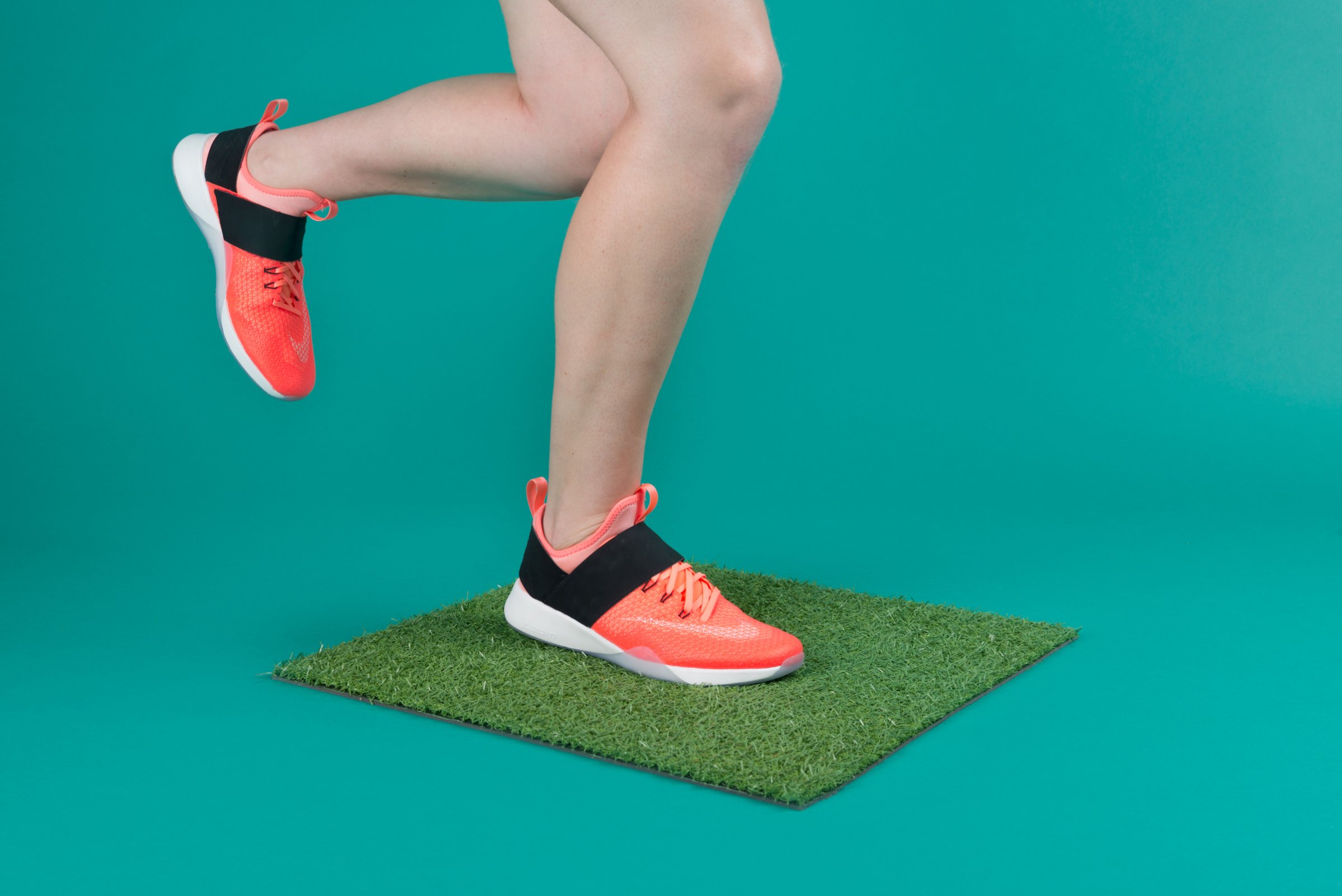
Recall a time when you took a long walk on a beach. Your feet probably felt pretty tired by the end of it. “Your feet are tired because every time you press down on sand, the sand moves away from you, so your foot muscles have to work harder than on stiff surfaces,” says Daniel Lieberman, chair of the Department of Human Evolutionary Biology at Harvard University.
The difference between walking on shifty sand or hard cement is comparable to the difference between walking barefoot or in shoes. “When you walk in shoes, your feet are pressing against a stiff substitute for the ground that makes the muscles in the feet have to work less than if you were barefoot,” he says.
While less work may seem like a good thing, it may actually leave your feet vulnerable to injury. Lieberman and other researchers have found evidence that people who predominantly walk or run in “minimal” shoes—shoes that mimic your bare feet by ditching arch support and a restrictive toe box while incorporating a very thin, flexible sole—tend to have stronger, stiffer feet than those who wear traditional shoes. (Vibram FiveFingers and New Balance Minimus are two examples of minimal shoes, but some flexible ballet flats that don’t crush your toes also fit the bill.)
Why are stronger and stiffer feet healthier? “The concern is that a weaker foot is a foot prone to problems like flat feet,” Lieberman says. In flat feet, the bones forming the arch of the foot don’t really arch—they lie flat on the ground. Research has linked flat feet to knee pain, cartilage damage and low-back pain. In civilizations around the world, “people who are habitually barefoot or minimally shod have much lower rates of flat feet than habitually shod populations,” Lieberman says.
Given all this evidence, there’s a case to be made that the ideal footwear is the one you were born with—or at most a minimal shoe. But traditional shoes can be good for your feet, too. “We”—meaning human beings—“started wearing shoes for a reason,” Lieberman says. “They’re comfortable and they protect our feet, so there are benefits and costs.”
Read More: Best Shoes for Plantar Fasciitis According to Podiatrists
Determining the “healthiest” shoe for a given person has to take into account their age, health status, walking and running habits, and other factors, he says. For example, some people accustomed to running in traditional shoes who quickly transition to minimal footwear may be at risk for injury, and so will those who slam their feet down when they walk. “Also, people with neuropathy who have loss of sensation in their feet—you put them in a minimal shoe, and that person will probably hurt himself or herself,” he says.
But there are some simple rules to follow when shopping for healthy footwear.
“The two main issues with people’s footwear are poor fit and heel elevation,” says Hylton Menz, a podiatrist and professor of biomechanics at La Trobe University in Australia. Some of Menz’s research on older adults shows that too-short or too-narrow shoes can lead to foot deformities and increased risk for weakness and falls, as well as growths like bunions, corns and calluses. The healthiest footwear for both older and younger adults should fit well and have a low, broad heel, a thin and flexible sole, and some kind of lace, strap or Velcro to ensure the shoe stays firmly attached to the foot, he says.
Sandals and flats often fit this description, though many don’t. And if you’re wondering about the benefits of orthotics, the research is mixed. (If you’re suffering from foot or joint problems, talk through your optimal shoe choices with your doctor.)
As you might expect, high heels are problematic. “There are certainly many negative consequences of wearing high heels, especially over a longer period,” says Mickey Wiedemeijer, a human movement researcher at University Medical Center Groningen in the Netherlands who has published research on walking gait and high heels. Along with causing forefoot pain, high heels can result in lordosis, an inward curving of the lower back that can lead to pain, she says.
Read More: The Best Walking Shoes: 16 Pairs That Offer Comfortable Support
The risks associated with heels are especially great among older and heavier adults. But even if you’re young and slim, Wiedemeijer recommends mixing up your shoe choices. If you insist on wearing heels, “regularly switching footwear from high heels to lower heels will prevent muscles from overstraining, and [allows] joints to load differently with a larger range of motion,” she says.
Even if you don’t wear heels, her advice to regularly switch up your shoe styles may be prudent. “Do the same thing over and over, and you get stress injuries,” Lieberman says. Wear the same style (or pair) of shoes all day every day, and you may be asking for trouble, because you’re not mixing up the demands placed on your muscles, bones and joints.
In short, there’s evidence that time spent barefoot or sporting minimal shoes may help strengthen your feet and save you from pain and injury. Also, frequently changing up your shoe styles and leaning toward properly fitted footwear—ideally something with a low heel and a thin, flexible sole—are other good ways to keep your feet and body healthy.
More Must-Reads from TIME
- Cybersecurity Experts Are Sounding the Alarm on DOGE
- Meet the 2025 Women of the Year
- The Harsh Truth About Disability Inclusion
- Why Do More Young Adults Have Cancer?
- Colman Domingo Leads With Radical Love
- How to Get Better at Doing Things Alone
- Michelle Zauner Stares Down the Darkness
Contact us at letters@time.com